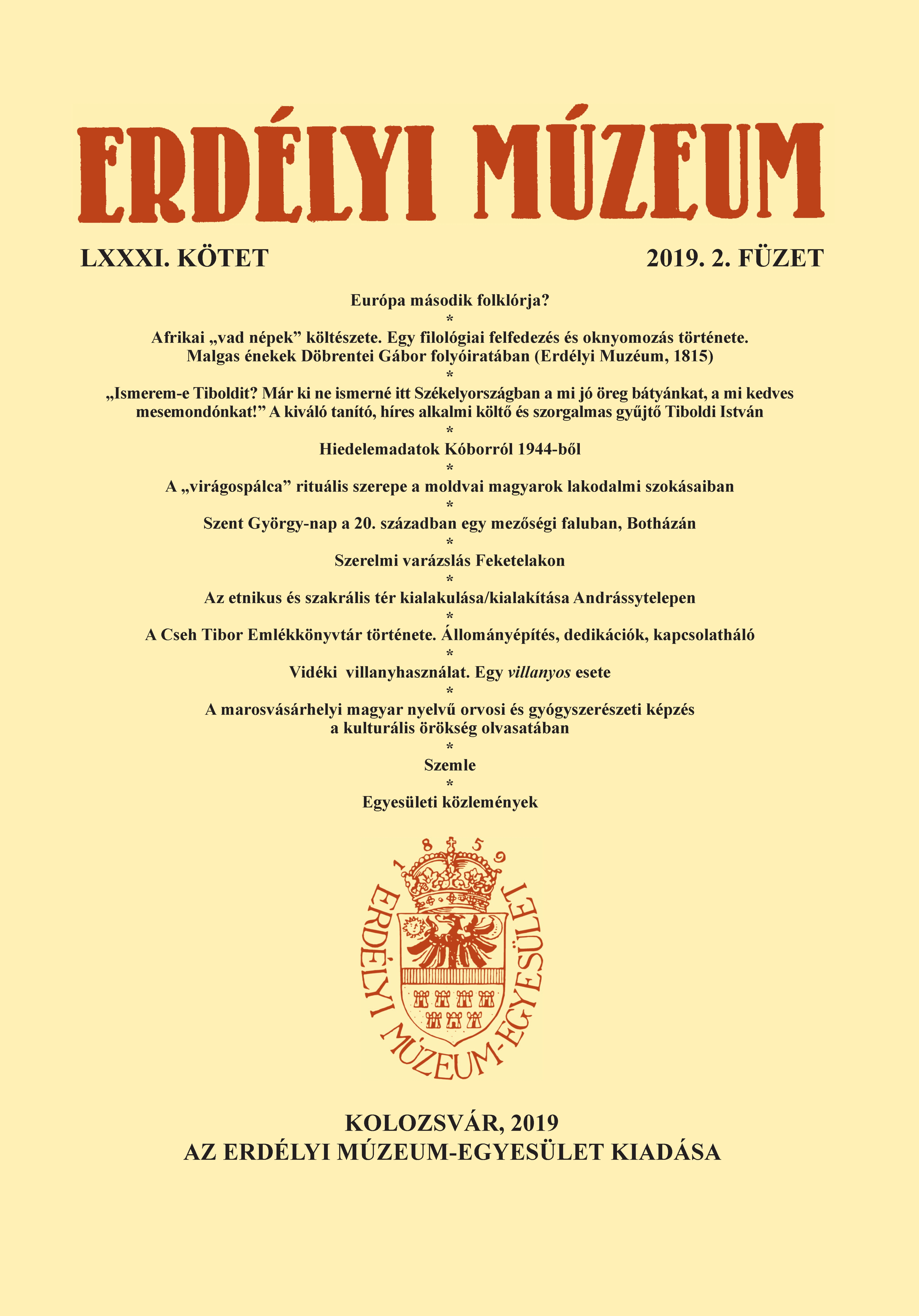Szent György-nap a 20. században egy mezőségi faluban, Botházán
St. George’s Day in Boteni, a Village on the Transylvanian Plains, in the Twentieth Century
Author(s): Győző ZsigmondSubject(s): Customs / Folklore, Culture and social structure
Published by: Erdélyi Múzeum-Egyesület
Keywords: folklore; ethnographic region of Mezőség/Câmpia Transilvaniei; Hungarian folk customs; beliefs; St. George’s Day;
Summary/Abstract: The author presents some elements of St. George’s Day which surely existed between 1950 and 1970 in Botháza/ Boteni, but many of which are preserved only in memory today. The customs presented are: 1. The “shouting on the mountain” proved to be a more generally valid statement of opinion based on community morals; In Boteni they shouted exclusively in connection with love life. 2. the innepi tánc ’festive dance’, which was an open-air, Hungarian and Romanian dance, Hungarians and Romanians took turns dancing it. 3. Sprinkling the girls was not only an Easter habit. In Boteni they used to sprinkle, to “soak” on St. George’s Day instead. 4. In the recent past, in Boteni on the Transylvanian Plains the milk measuring practiced together by the local Romanians and Hungarians as well as the so-called “papălugăr making” took place at the same time. Some beliefs are also presented: 1. “strigois” (which is the Hungarian equivalent of the “priculici” rather than that of the witch in this case) should not take the milk away from the cows, it is also known that the strigoi appearing in form of a wheel or of a dog was not always the cause of the witchcraft, 2. St. George’s Day is also the day of treasure hunting. In general, several customs of banishing the evil, beliefs, forecast of weather and crops accompany St. George’s Day, and it is interesting that almost each of them can be found in one single village. It is primarily the archaic character of Transylvanian Plains, preserving traditions, that explains the fact that such rich tradition characterizes one single village, even if it mostly belongs to the past.
Journal: Erdélyi Múzeum
- Issue Year: LXXXI/2019
- Issue No: 2
- Page Range: 101-107
- Page Count: 7
- Language: Hungarian

